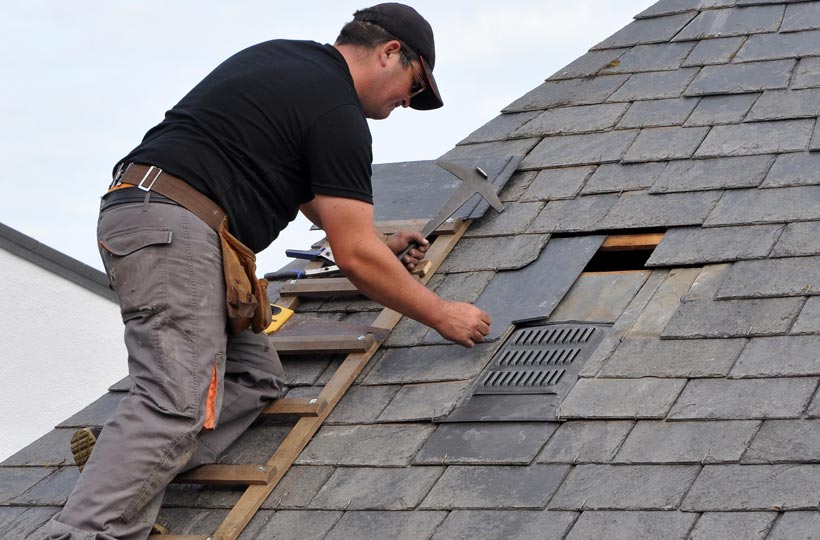Residential roofing contractors play a crucial role in providing sustainable roofing solutions that not only protect homes but also contribute to environmental conservation and energy efficiency. Sustainable roofing solutions encompass a range of materials and techniques designed to minimize environmental impact and maximize long-term benefits. In this article, we will explore the definition and importance of sustainable roofing, discuss various types of sustainable roofing materials, examine the environmental impact of sustainable roofing, and provide considerations for choosing a residential roofing contractor for sustainable roofing projects to get Residential roofing contractor.
- Introduction to Sustainable Roofing Solutions
Sustainable roofing involves the use of materials and techniques that minimize environmental impact and promote energy efficiency, while also providing long-term durability and performance.
Definition of Sustainable Roofing
Sustainable roofing focuses on utilizing eco-friendly materials, such as recycled content or renewable resources, and implementing techniques that reduce energy consumption and environmental footprint over the lifespan of the roof.
Importance of Sustainable Roofing
Sustainable roofing is essential for mitigating environmental impact, conserving natural resources, and promoting energy efficiency in residential buildings. By choosing sustainable roofing solutions, homeowners can reduce their carbon footprint and contribute to a more sustainable future.
Benefits of Sustainable Roofing Solutions
The benefits of sustainable roofing solutions include:
- Energy Efficiency: Sustainable roofing materials can help reduce energy consumption by improving insulation and reflecting heat, leading to lower heating and cooling costs.
- Environmental Conservation: Sustainable roofing reduces the demand for natural resources and minimizes environmental pollution associated with traditional roofing materials.
- Long-Term Durability: Sustainable roofing materials are often more durable and resistant to wear and tear, resulting in fewer repairs and longer lifespans for residential roofs.
II. Types of Sustainable Roofing Materials
Several types of sustainable roofing materials are available, each offering unique benefits and applications for residential buildings.
Green Roofing
Green roofing involves the installation of vegetation, soil, and drainage layers on the roof surface, creating a living ecosystem that provides numerous benefits.
Definition and Components
Green roofing systems typically consist of multiple layers, including waterproofing membranes, drainage systems, growing medium, and vegetation. These components work together to support plant growth and provide insulation and water retention.
Benefits and Applications
Green roofs offer benefits such as improved insulation, stormwater management, and air quality enhancement. They are suitable for both residential and commercial buildings and can be installed on flat or sloped roofs.
Considerations for Installation
Installation of green roofing requires careful planning and design to ensure structural integrity and proper drainage. Residential roofing contractors with experience in green roofing installations can provide expert guidance and recommendations.
Solar Roofing
Solar roofing incorporates photovoltaic panels or solar tiles into the roof structure to harness solar energy for electricity generation.
Photovoltaic Panels
Photovoltaic panels are solar panels that convert sunlight into electricity using semiconductor materials. They can be mounted on the roof surface or integrated into roofing materials for a seamless appearance.
Solar Tiles
Solar tiles are roofing tiles with built-in solar cells that generate electricity while blending seamlessly with traditional roofing materials. They offer an aesthetic alternative to traditional solar panels.
Benefits and Considerations
Solar roofing systems reduce electricity bills, decrease reliance on fossil fuels, and qualify for tax incentives and rebates. However, they require an upfront investment and may have specific installation and maintenance requirements.
Cool Roofing
Cool roofing utilizes reflective coatings or light-colored materials to reduce heat absorption and lower indoor temperatures.
Reflective Roof Coatings
Reflective roof coatings are applied to the roof surface to reflect sunlight and heat away from the building, reducing cooling loads and energy consumption.
Light-Colored Materials
Light-colored roofing materials, such as white membranes or metal roofs, reflect more sunlight and heat than dark-colored materials, resulting in cooler indoor temperatures and reduced energy usage.
Energy Efficiency and Benefits
Cool roofing systems can significantly reduce cooling costs, improve indoor comfort, and prolong the lifespan of roofing materials by reducing thermal stress and UV exposure.
III. Environmental Impact of Sustainable Roofing
Sustainable roofing solutions have a positive environmental impact by reducing the urban heat island effect, managing stormwater runoff, and conserving energy.
Reduction of Urban Heat Island Effect
The urban heat island effect refers to the phenomenon where urban areas experience higher temperatures than surrounding rural areas due to human activities and the built environment.
Reflectivity and Albedo
Sustainable roofing materials with high reflectivity and albedo properties reflect sunlight and heat away from buildings, reducing surface temperatures and mitigating the urban heat island effect.
Mitigation of Heat Absorption
By reducing heat absorption and lowering indoor temperatures, sustainable roofing solutions decrease the demand for air conditioning, resulting in energy savings and reduced greenhouse gas emissions.
Stormwater Management
Sustainable roofing materials help manage stormwater runoff by absorbing and filtering rainwater, reducing the strain on municipal drainage systems and minimizing pollution.
Absorption and Filtration
Green roofing systems absorb rainwater and filter pollutants, such as heavy metals and contaminants, before releasing clean water into the environment, promoting groundwater recharge and water quality improvement.
Reduction of Runoff and Pollution
By reducing stormwater runoff and pollution, sustainable roofing solutions help protect local waterways, aquatic ecosystems, and drinking water sources from contamination and degradation.
Energy Conservation
Sustainable roofing materials contribute to energy conservation by improving insulation, reducing heat gain, and lowering cooling loads in residential buildings.
Insulation and Thermal Performance
Green roofing and cool roofing systems provide thermal insulation and reduce heat transfer through the roof, resulting in lower energy consumption for heating and cooling.
Reduction of HVAC Load
By reducing the need for air conditioning during hot weather, sustainable roofing solutions decrease the strain on HVAC systems, prolonging their lifespan and reducing maintenance costs.
IV. Considerations for Choosing a Residential Roofing Contractor for Sustainable Roofing
When selecting a residential roofing contractor for sustainable roofing projects, homeowners should consider factors such as experience, certifications, and customer reviews.
Experience and Expertise
Choose a residential roofing contractor with:
Knowledge of Sustainable Roofing Materials
Select a contractor who is knowledgeable about sustainable roofing materials, techniques, and best practices for installation and maintenance.
Track Record of Sustainable Roof Installations
Look for a contractor with a proven track record of successful sustainable roof installations and satisfied clients.
Certifications and Qualifications
Ensure that the roofing contractor has:
LEED Certification
Look for contractors who are LEED-certified or have experience working on LEED-certified projects, indicating their commitment to environmental sustainability and green building practices.
Green Building Credentials
Choose contractors with green building credentials and affiliations with industry organizations, such as the U.S. Green Building Council or the Green Building Initiative.
Customer Reviews and References
Check customer reviews and references to:
Reputation for Quality and Reliability
Verify the contractor’s reputation for quality workmanship, reliability, and customer satisfaction through online reviews, testimonials, and references from past clients.
Testimonials from Satisfied Clients
Seek testimonials from satisfied clients who have had sustainable roofing projects completed by the contractor, ensuring confidence in their ability to deliver superior results.
V. Conclusion
Investing in sustainable roofing solutions with a reputable residential roofing contractor is essential for homeowners looking to minimize environmental impact, conserve energy, and achieve long-term benefits and performance. By choosing sustainable roofing materials and techniques, homeowners can contribute to environmental conservation and energy efficiency while protecting their homes and enhancing their quality of life. Trusting professionals with experience, certifications, and positive reviews ensures that sustainable roofing projects are completed to the highest standards, delivering lasting value and peace of mind for homeowners.




